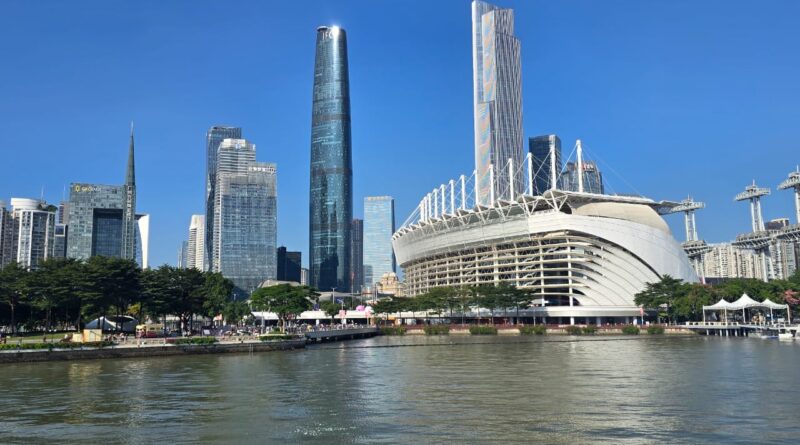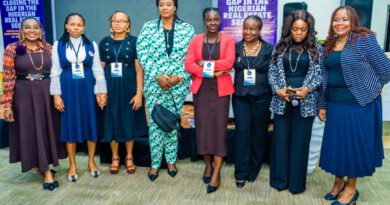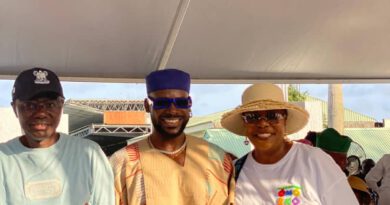𝐀𝐲𝐞, 𝐋𝐢𝐟𝐞, 𝐚𝐧𝐝 𝐭𝐡𝐞 𝐉𝐨𝐮𝐫𝐧𝐞𝐲 𝐓𝐡𝐫𝐨𝐮𝐠𝐡 𝐂𝐡𝐢𝐧𝐚
𝐵𝑦: ‘𝑑𝑎𝑦𝑜 𝐴𝑑𝑒𝑑𝑎𝑦𝑜
I grew up listening to Barrister’s Aye, never imagining that one day I would see the kind of world he once sang about.
His words about life’s fleeting nature and man’s endless search for meaning shaped the way I view the world.
Years later, standing by the Pearl River in Guangzhou, watching the reflection of city lights ripple across the water, I felt those same words come alive again, that life is indeed a marketplace, and we are but travelers through it.

Music shaped my soul. Chief Commander Ebenezer Fabiyi Obey and Chief Alhaji Sikiru Ayinde Barrister were more than musicians, they were philosophers, chroniclers of our time. Obey, the moralist of juju music, and Barrister, the founder of Fuji, both sang about life as they saw it, its joys, its ironies, its lessons.
Their stories are interwoven, inseparable, and when you talk about reportage in music, about truth told through melody, these two men hold the record.
It was in 1981 that Barrister released Aye (Life), the song that changed everything for me. His narration of Disney World in Florida, composed in Yoruba, was more than music. It was poetry painted with rhythm. That was when I truly began to listen to life through sound.
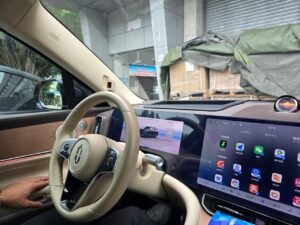
Over the years, their music became the foundation of how I see the world. Their voices echoed in my work, shaping my documentaries, my books, and my philosophy.
And so, what you are about to read is no different from Aye. It is reportage through my lens, a reflection on life, culture, and discovery.
Though I had been to China five times before, this sixth visit was unlike any other, an awakening of both mind and spirit. It had been ten years since I last visited Shenzhen, and back then, my trip was brief. I was younger then; what my eyes saw was limited. Now, with more years behind me and deeper insight within me, I saw not just structures, but stories, not just cities, but meaning.
Landing in Guangzhou, I was immediately struck by how much had changed. From my window seat, I saw wider roads, greener spaces, and those familiar, colourful flowers in the median still adding their quiet charm.
At the airport, I noticed how much the landscape of travel itself had evolved, a huge new terminal, Terminal Two, now stands as a testament to China’s relentless progress over the last decade, vast and gleaming, a city within a city.
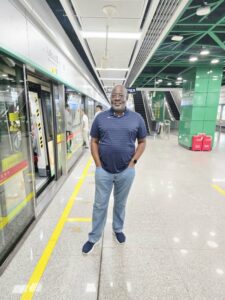
My hotel stay offered a glimpse into the future, technology everywhere, working in perfect rhythm with humanity. Robots gliding silently across the lobby caught my attention. One even came to my room by mistake. My phone rang, and to my surprise, a gentle electronic voice told me a charger had been delivered. When I opened the door, the robot’s compartment slid open, revealing the charger I never ordered. I told it there was a mistake; it blinked twice and rolled away politely. I stood there in awe, wondering what the world would look like in another twenty years.
They say traveling is reading the world one chapter at a time. Guangzhou is a book written in light, steel, and water.
The Pearl River, winding through the heart of the city, became my classroom. One evening, I took a night cruise, and there it was, the magnificent Canton Tower, rising into the clouds like a rainbow torch. Its colours danced across the water, casting reflections that seemed to whisper of the city’s pride and progress.
Guangzhou is safe, organised, and remarkably efficient. Even at midnight, you can walk without fear.
The Guangzhou Metro, now twenty-two lines strong, carries millions daily, yet runs with silence and precision. At each station, security scanners check every bag, and cameras watch every corner, not with oppression, but with purpose.
My friend Timothy Adegoke, who has made China his home, speaks Mandarin as fluently as a Yoruba man from Oyo speaks Yoruba. His presence opened doors to corners of the city I might never have found, restaurants, teahouses nestled behind skyscrapers, serene parks where the elderly play chess by moonlight, and vibrant markets bursting with colour, sound, and scent.
Guangzhou reminded me of Nigeria’s Trade Fair Complex, that great monument of vision built along the Lagos–Badagry Expressway. I still remember my first visit in the early 1980s. It was beautiful, alive, and full of promise, manicured lawns, proud pavilions, and the air of possibility.
Today, the Canton Fair in Guangzhou carries that same spirit, but on a global scale. Twice a year, thousands of people from every corner of the world gather there to trade, learn, and build partnerships. It is a living example of what discipline, planning, and consistency can achieve.
From Guangzhou, I boarded the high-speed rail to Shenzhen, a sleek journey of comfort and quiet speed. As the train glided through the landscape, I thought again of Aye, and how Barrister’s wisdom rings true even now: life moves swiftly, but meaning comes to those who reflect.
Shenzhen today is not the city I once knew. It has transformed into a futuristic masterpiece, vibrant, clean, and alive with innovation. My host took me around in a driverless car, and I sat in awe as the vehicle navigated busy roads with flawless precision.
Here, one subtle but beautiful distinction caught my eye: electric cars glide through the streets proudly bearing green number plates, while petrol-powered ones retain blue plates, a simple yet powerful symbol of a nation’s shift toward sustainability.
We visited gleaming towers, sprawling parks, and waterfronts that pulsed with light and life.
Everywhere, technology hummed in quiet harmony. Nearly half of all vehicles are electric, including taxis gliding noiselessly through the streets. Motorbikes, too, are mostly electric, contributing to an almost serene urban rhythm. Despite the vast population, the city breathes, well-planned, safe, and inspiring.
At night, Shenzhen glows. Parks fill with music; couples dance under glowing trees; families laugh as they stroll through markets alive with aroma and colour. It is a city that works, but more importantly, a city that lives.
China moves with purpose. Beneath its towers and technology lies a philosophy of balance, progress with discipline, innovation with order. There is beauty in their precision, and meaning in their structure.
As I reflect on this journey, I think again of Barrister’s Aye. Life, like travel, is fleeting yet profound. Each destination teaches us something new about ourselves. I have seen the world through my camera lens, but this time, I saw it through my soul.
Just as Aye reminded us that life is a marketplace and heaven is home, this journey reminded me that time is the truest currency. We are all travelers through nations, through moments, through emotions. What we gather along the way are not possessions, but memories, wisdom, and gratitude.
I will return to Guangzhou and Shenzhen, and next time to Beijing and Shanghai. And I won’t come alone; I’m coming back with my family and friends, to share these river lights, these quiet parks, these driverless roads, and the living lesson that progress and beauty can walk hand in hand.
Standing beneath the Canton Tower, watching its rainbow lights flicker against the night sky, I thought of home, of Nigeria’s boundless potential. China showed me what vision and discipline can build, and my heart whispered a prayer that my beloved country might find her rhythm again.
Nigeria, a land of brilliance and beauty, blessed beyond measure yet burdened by neglect, may we rise again.
May leadership find wisdom, and may unity overcome division.
May our cities shine, our roads flow freely, and our youths find hope once more.
May our nation rediscover her own Aye, her life, her rhythm, her glory.
Author’s Note:
𝑾𝒓𝒊𝒕𝒕𝒆𝒏 𝒇𝒓𝒐𝒎 𝒎𝒚 𝒓𝒆𝒇𝒍𝒆𝒄𝒕𝒊𝒐𝒏𝒔 𝒂𝒄𝒓𝒐𝒔𝒔 𝑪𝒉𝒊𝒏𝒂, 𝒊𝒏𝒔𝒑𝒊𝒓𝒆𝒅 𝒃𝒚 𝒕𝒉𝒆 𝒕𝒊𝒎𝒆𝒍𝒆𝒔𝒔 𝒘𝒊𝒔𝒅𝒐𝒎 𝒐𝒇 𝑨𝒚𝒆 𝒃𝒚 𝑪𝒉𝒊𝒆𝒇 𝑨𝒍𝒉𝒂𝒋𝒊 𝑺𝒊𝒌𝒊𝒓𝒖 𝑨𝒚𝒊𝒏𝒅𝒆 𝑩𝒂𝒓𝒓𝒊𝒔𝒕𝒆𝒓, 𝒂𝒏𝒅 𝒎𝒚 𝒆𝒏𝒅𝒖𝒓𝒊𝒏𝒈 𝒍𝒐𝒗𝒆 𝒇𝒐𝒓 𝑵𝒊𝒈𝒆𝒓𝒊𝒂, 𝒎𝒚 𝒉𝒐𝒎𝒆, 𝒎𝒚 𝒉𝒆𝒂𝒓𝒕.

